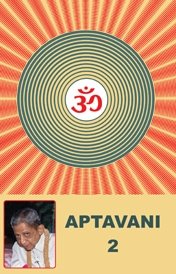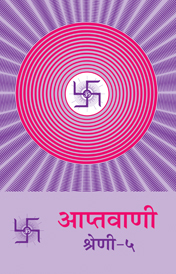What is Meditation?
Meditation (dhyan) is a spiritual practice performed for mental, physical and emotional well-being. When you meditate on an object, mantra or a guru your mind becomes still because you are making the mind concentrate on one thing. There are various physical benefits of meditation but scientifically the purpose behind meditation is to strengthen the mind. Experts say that meditation results in peace and happiness. But does that remain in times of suffering?
You feel cool when you are sitting next to a block of ice, but what happens as soon as you move away? You return to the same state in which you were before, experiencing warmth. Similarly, when you meditate you get temporary relief. However, you cannot get permanent happiness from relative meditation. So what can we do to experience permanent peace and happiness?
The answer is Real meditation, which can only be attained from the Gnani Purush.
Top Questions & Answers
-
Q. What are the different types of meditation (dhyan)?
A. Of the four types of dhyans (meditations), humans are constantly preoccupied with only one. What... Read More
-
Q. Does Karma charge during the State of Meditation?
A. When these religious teachers do pratikraman, samayik, or give lectures, their conduct is their... Read More
-
Q. Does our present and past life Karma depend on dhyan?
A. Questioner: You said that there is planning behind whatever one experiences now. In this process... Read More
-
Q. What was Lord Parshvanath's state of Meditation during His penance (tapa)?
A. How can one deal with such vengeful people? With such people, even if you were to fire a gun at... Read More
-
Q. What is the difference between Meditation and Religion (dharma)? And what is true religion ?
A. What is the definition of dharma (religion)? That which reverts to its original nature (dharma)... Read More
-
Q. By awakening the Kundalini, can one achieve Self-Realization?
A. Everything is 'relative'. 'Relative' (worldly) means that it has an 'ornamental' luster. It stills... Read More
-
Q. What can one achieve by Sound Meditation?
A. Questioner: What is anahat naad? Dadashri: It means to capture sound from any part of the body; it... Read More
-
Q. Which type of meditation does a true guru or sadguru make us do?
A. People have not understood the term 'guru'. People in India have not understood whom to call a... Read More
-
Q. What is Samadhi Meditation? How can one achieve natural (sahaj) samadhi, nirvikalp state?
A. Questioner: Dada, I can remain in samadhi (unperturbed state) for four hours. Dadashri: That is... Read More
Spiritual Quotes
- What is true dharma dhyan (righteous or true meditation)? Is it doing worship, prayer, penance, samayik (introspection), repentance and listening to religious talks? No. All those are overt and tangible acts of rituals; they are material practices. However, what is of importance and becomes recorded as one's karma is where one's dhyan i.e. one's attention or inner intent lies while one is conducting such rituals. While worshipping God, if one pictures God in his mind along with the picture of his shop or his business or the shoes he left outside the temple, how can that be called true meditation (dharma dhyan)?
- The Lord does not take into consideration your external actions but rather your inner attentive intent during all your activities (kriya). The actions being carried out at present are the result of the meditation (dhyan) done in your past life.
- When you tell a lie, the awareness about doing pratikraman, is the meditation that is considered dharma dhyana (positive meditation that takes one higher spiritually).
- If you become angry with your son, your bhaav (intention) should be, 'This should not happen.' This means that you have changed negative meditation into positive meditation. Although you were angry, the result turns positive internally because you have changed your true inner intent.
- If you want liberation, then remain as the Self (shukla dhyan) and if you want the worldly life, then maintain an attitude of helping others and avoid negative meditation (artadhyan and raudradhyan).
- You do not know God so how will you meditate on him? Instead, you should meditate on the guru. At least you are able to see his face. In this case, it is better to do meditation of the satguru because you cannot 'see' God.
- Whenever he practices his religious austerities (meditation, fasting and penance), he can never see his faults. The mistakes only become apparent when the Gnani Purush gives you the knowledge whereby you realize the Soul.
- What are the benefits of yoga? It helps prevent external garbage from setting in and will make the mind stronger, however, without atma-yoga there is no liberation.
- To remain as the Self is atma-yoga. Realization of the Self is atma-yoga; it is your own abode. The rest are union with the body (deha-yoga) the non-self. Fasting, penance, renunciation etc., are all deha-yoga.


Related Books
subscribe your email for our latest news and events















